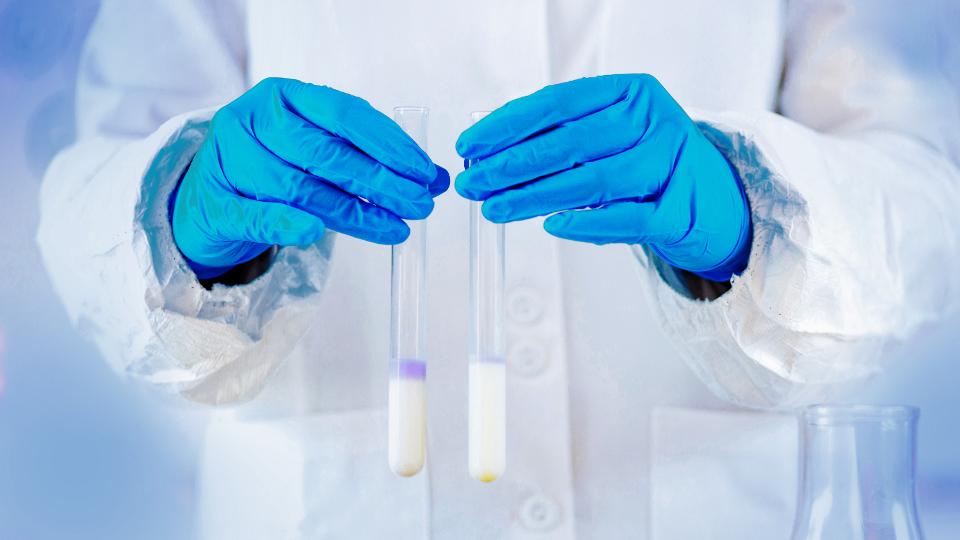
The most effective method of fighting food waste is to simply throw out less food, but that isn’t always as easy as it sounds. Expiration dates aren’t accurate indicators of spoilage, so consumers end up wasting far too much. That’s the problem a team of nineteen college students from the University of Michigan is looking to solve, by developing a paper strip test that, with just a few drops of milk, can tell consumers whether or not their milk is still good enough to drink.
One out of every six pints of milk is wasted
According to the USDA, dairy products like milk are one of the most frequently wasted food categories. A 2018 study revealed that nearly one out of every six pints of milk is tossed, in fact.
Spoilage bacteria begin to grow almost as soon as milk is packaged or bottled. Proper refrigeration, pasteurization and other processing systems can slow or even prevent this natural process, of course, but, eventually, once the milk has been opened, bacteria will continue to grow and develop, until ultimately they reach a tipping point.
That spoilage tipping point usually has little to do with the expiration date found on the food label, however, explains William Chen, a rising sophomore at the University of Michigan, who says expiration dates are conservative in order to protect manufacturers from liability. According to the FDA, consumer uncertainty about these dates is contributing to about 20 percent of food wasted at home.
Chen pitched his food waste idea to the school’s synthetic biology team, which eventually led to the current milk spoilage project. That’s the team’s entry this year for iGEM (or International Genetic Engineering Machine Competition), a synthetic biology competition held annually in Boston.
The more spoilage bacteria, the more signaling molecules
The mere presence of spoilage bacteria isn’t enough to render milk inedible, so it’s critical that they pinpoint the precise threshold of spoilage. The team decided against testing for the presence of live bacteria, mostly because they don’t want consumers accidentally releasing genetically modified bacteria at home.
Instead, the test will detect the presence of N-acyl homoserine lactone or AHL, a signaling molecule produced by spoilage bacteria that helps the bacteria communicate. “When milk goes bad,” explains Fiona Li, a rising junior on the team, “there will be a lot of spoilage bacteria growing with the milk.” As spoilage bacteria increase, so do the AHL molecules. “So if there are a lot of bacteria…we should be able to detect a very high concentration of this signaling molecule [too],” says Li.
The paper-based test will be similar to a pH test strip, explains Richelle Wilson, who is also a rising junior. “You take it out of the packaging and then you drop a little bit of milk onto the test paper.”
“Depending on the population of the AHL, you will get a gradient [color response],” adds another student on the team, rising senior Rachel Lee. The gradient color scale will tell consumers about how much longer they have to drink their milk. “Something like, if you see this color, your milk is probably going to expire within three days,” says Fiona Li.
Scientists may know how these AHL molecules work, but they don’t know many need to be be present for milk to spoil. “One of our side projects ,” says Lee. “is to quantify just how much AHL, this signaling molecule, is present at each stage of milk spoilage.”
Using synthetic biology to address food waste
Chen first competed in the iGEM competition as a high school student, and he says he was eager to participate at the college level too. Teams can learn from previous competition entries, something the University of Michigan team took advantage of by reviewing an entry that looked at meat spoilage, for example. From there, the team brainstormed what foods hadn’t yet been tackled, landing eventually on milk.
The students aren’t all science majors, including Chen, an engineering major who is also responsible for coding the team’s website. The competition brings together students from all different majors and skill sets, requiring them to learn practical skills like fundraising and science communication too.
Wilson, who is also the finance chair for the project, has met with different department chairs at the university as well as a number of Ann Arbor synthetic biology companies to ask for advice.
“We are a completely student-run research team,” adds Lee, who says the opportunity has afforded them a unique opportunity to work independently, without help from professors or graduate students. “You just work on everything on your own,” she says, “which is pretty cool, I think.”























